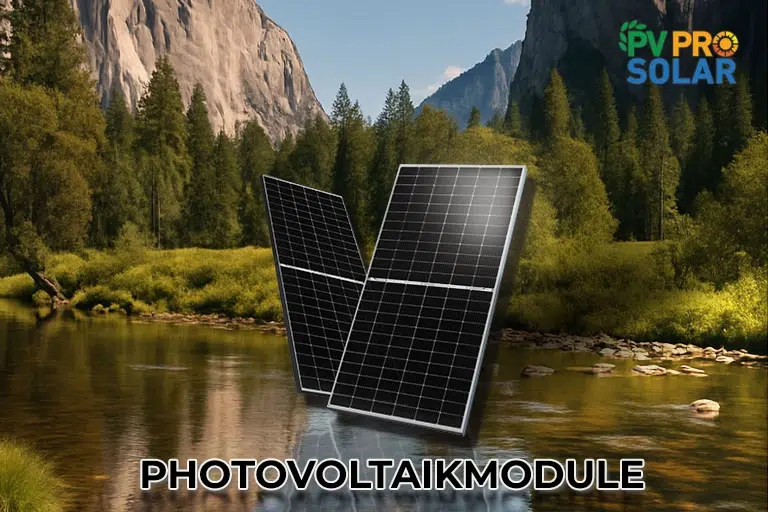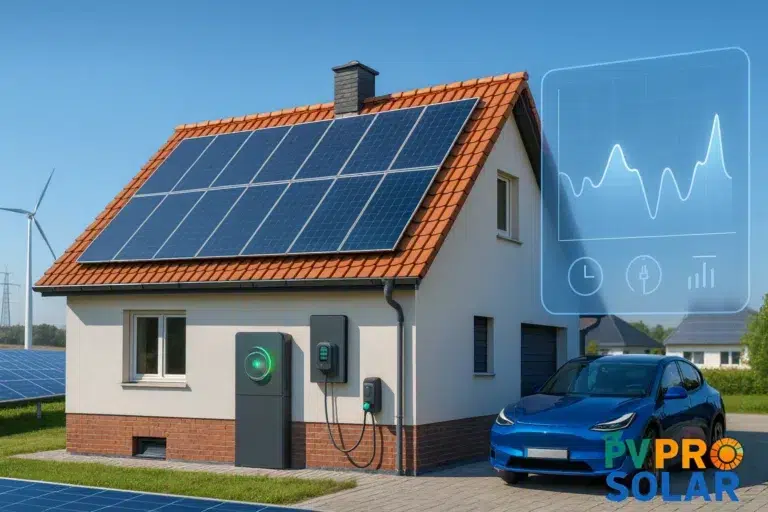Transporting PV Module: How Can You Do It Without Risking Damage?
Transporting PV modules is one of the most critical steps before a solar energy system is installed on a roof or in an open field. Even the slightest cracks, pressure marks, or microfractures can have a lasting impact on performance. That’s why anyone planning to move a PV module must understand and follow clear rules, use the right tools, and implement safe procedures.
What Are the Risks When Transporting PV Modules?
While photovoltaic modules are technically robust, they are mechanically sensitive. A single bump during loading, sudden jolts, or improper positioning in a vehicle can lead to:
- Microcracks in the silicon cells
- Glass breakage from point loading
- Damage to the aluminum frame
- Short circuits at the junction boxes
One of the riskiest methods is transporting PV modules flat, as pressure can distribute across the glass surface and cause long-term performance loss. The safest method is to secure modules in a stable transport rack specifically designed to prevent transit damage and ensure maximum safety. If you’re uncertain, it’s highly advisable to review manufacturer instructions or diagrams before starting the transport process.
Should PV Modules Be Transported Upright or Flat?
Industry experts agree: PV modules should be transported upright whenever possible. In a dedicated transport rack, they remain secure thanks to clamping strips and spacers. Flat transport is only acceptable when absolutely unavoidable—and even then, only with protective layers (such as cardboard or foam) between the modules to ensure safe packing.
So, to answer the question “Transporting PV modules: standing or lying?”—upright is ideal, lying down is a last resort. Manufacturers and professional installers consistently recommend upright transport for best results.
How Many PV Modules Fit on a Trailer?
Many installers and private homeowners use a trailer to transport multiple solar panels at once. The capacity depends on:
- Trailer size (e.g., 2.0 × 1.3 m standard)
- Module dimensions (approx. 1.7 × 1.1 m for 400–450 Wp modules)
- Stacking method
When stacking modules, it’s critical not to stack glass-on-glass directly. Protective layers such as foam or cardboard are essential. Manufacturers typically ship modules on pallets holding 30–36 units—this provides optimal stability. For efficient handling on-site, modules can be securely strapped to avoid damage during installation.
For those frequently transporting multiple modules, using a stable and reliable system is key. Also, remember: efficient transport minimizes damage risks and reduces costs, which is particularly important in modern systems featuring inverters and battery storage.
How to Safely Transport PV Modules in a Car?
DIY enthusiasts sometimes consider transporting PV modules in a car. In theory, this can be done if:
- The back seats are folded down
- Modules are laid flat or diagonally in the trunk
- Adequate padding is in place to absorb vibrations
Caution: Transporting a PV module on a car roof (using a roof rack) is risky due to wind pressure and driving vibrations that can cause damage. For private individuals, using a small trailer designed for transporting PV modules is often the simplest and safest option.
What Tools Help Ensure Safe PV Module Transport?
Professionals use specialized tools and equipment, such as:
- Transport racks for PV modules for upright transport
- Forklifts with pallet forks for full pallet handling
- Transport rollers for short distances on the job site
- Edge protectors and tensioning straps for securing inside vehicles
- Solar lifts for safely hoisting modules onto rooftops
For smaller jobs: The simplest PV modules can be carried by two people, as long as they remain in their original packaging.
What Mistakes Should Be Avoided When Transporting PV Modules?
Most transport damage occurs due to a lack of knowledge. Common mistakes include:
- Stacking modules flat without protective layers
- Dropping modules directly onto hard surfaces
- Using an open trailer without a cover → risk of moisture and dirt
- Leaning modules against walls without padding
Storing or transporting PV modules flat is among the most dangerous practices and should be avoided at all costs.
Are There Differences in Transport Requirements for Different Module Types?
Yes. While standard glass-foil modules may seem durable, glass-glass modules are heavier and require more careful handling. Some niche products, such as so-called “Diesel solar modules” (a term used in online forums for certain off-grid applications), are smaller and lighter but just as fragile.
Depending on the size, weight, and installation site, the ideal method of transporting PV modules will vary.
How Is Delivery to the Installation Site Managed?
In professional projects, transporting PV modules is typically carried out in several coordinated steps:
- Delivery on a pallet by a distributor or freight service
- Unloading using a forklift or crane
- Storage in a safe, dry, upright position
- Transport to the installation area—either by trailer or handcart
- Lifting to the roof with specialized lifts or platforms
Getting the PV module onto the roof is the most sensitive phase. Proper securing is vital to avoid the risk of dropping or breakage.
How to Move Individual Modules Easily?
If you’re only moving a few panels, try these simple tips:
- Always carry them with two people
- Wear gloves to avoid cuts from edges
- Always grip the frame, never the glass
- For short distances: use carry straps or a dolly
- For longer distances: transport with a PV module trailer
This ensures controlled handling and guarantees the safest transport method.
Why Is It Worth Hiring Professionals for PV Transport?
While transporting a PV module may sound straightforward, it involves significant risks. Professionals offer:
- Transport insurance
- Proven methods and tools (racks, cranes)
- Experience with fragile components
- Speed and security
Especially for homeowners or businesses installing several kilowatts of solar capacity, this is the smartest solution.
Final Word: How to Transport PV Modules the Right Way?
Transporting a PV module requires careful planning. Whether using a car, trailer, or professional logistics service, the key principles are:
- Transport modules upright in a PV module transport rack
- Never stack unprotected modules
- Always use intermediate layers
- Avoid pressure on glass surfaces
By following these rules, you avoid glass breakage, performance loss, and expensive warranty claims.
Trust the experts at PVPro Solar GmbH. We provide consultation on transport, installation, and complete solar solutions—ensuring your modules arrive safe and ready for peak performance.
Depending on the size, you can typically transport 6–8 modules on a standard 2 × 1.3 m trailer. Always use padding, tension straps, and weather protection.
Yes, but only for short distances and with proper padding. A PV module trailer or transport rack is the safer option. How many PV modules can I safely transport on a standard trailer?
Can I transport PV modules flat in a car?








